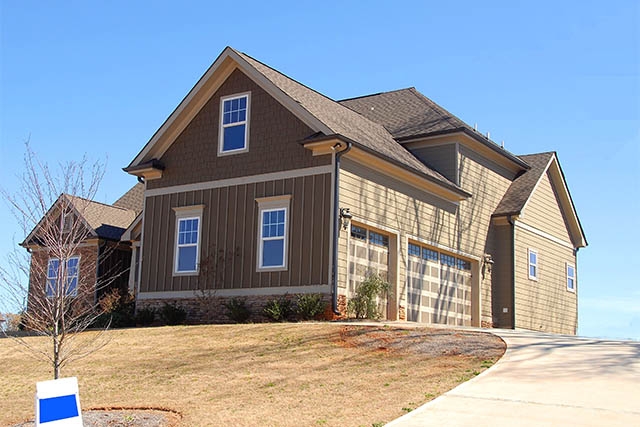Here’s a challenging thought: Things aren’t as bad as they seem.
Since there is plenty of bad news out there, how can I say this?
We see things dark and hopeless because we are looking at the world through a wealth window, not an income window. Wealth changes faster than income. It also changes more than income. But when push comes to shove, the standard of living that most Americans enjoy is determined by flows of income and benefits, not wealth.
The wealth destruction figures, which are reported ad nauseam, are scary.
- Home prices are down enough that one homeowner in six is “upside down”— they owe more than their house is worth.
- According to the Case-Shiller indexes, home prices have declined about 25 percent in the 20 largest urban areas since the July 2006 market peak.
- The Federal Reserve consumer balance sheet figures showed that Americans lost $7 trillion between the third quarter of 2007 and the third quarter of 2008, a decline of 11 percent. When the figures for the first quarter of 2009 are released in June, we will probably learn that we’ve collectively lost over $10 trillion.
- The recently released figures from the 2007 Survey of Consumer Finances estimate that since the survey was done, we’ve all lost enough wealth that our collective net worth is below what we had when the 2004 survey was done.
It’s all very scary. But let’s ask a rude question: Has your standard of living dropped by 20 percent? Has it fallen by 25 percent? Unless you’ve lost your job or lost your house, the answer is no. You may be worried. You may feel poorer. You may be poorer. But your standard of living hasn’t dropped much. More important, it probably won’t.
One way to understand the difference between wealth and income is to examine the standard of living for typical retirees. Their standard of living is based on four pillars: shelter, Social Security, a possible pension, and retirement savings. Let’s see how those have changed.
Shelter. Most retirees are homeowners. Few retirees have mortgages on their homes. A recent study by the AARP Public Policy Institute, for instance, found that 59 percent of all households under age 50 had a mortgage. Only 28 percent of those ages 51-61 had a mortgage, only 8 percent of those ages 62-69, and only 5 percent of those 70 and over had a mortgage.
The market value of homes is down, but their shelter value is unchanged. And most older Americans don’t have a mortgage to worry about. The toilets still flush, the air conditioning and heating still provide comfort, and the garage is still cluttered with stuff.
The value of that shelter is received in what economists call “imputed income”— benefits that are received in shelter services, not taxable cash. There is no loss of living standard here.
Social Security. Workers’ wages didn’t increase much last year, but Social Security benefits increased by 5.8 percent in January. Medicare premiums were unchanged. So the largest source of cash income for most retirees increased for 2009.
Pensions. Few things demonstrate the difference between wealth and standard of living better than pensions. While the assets supporting pensions fell dramatically in 2008 and are a cause of worry, the reality is that the vast majority of pension payments continue to be made. Better still, if your pension fund fails, it is insured by the Pension Benefit Guaranty Corporation. Few pensions would be reduced because pensions are fully insured up to $54,000 a year. Of course, not all retirees receive pensions.
Investments. If a retiree household had 60 percent of its nest egg in equities and 40 percent in fixed-income, the 50 percent decline in equities means they’ve lost 30 percent of their financial assets. That’s painful.
But the income from those assets hasn’t dropped 30 percent. While many companies are in the process of cutting their dividends, few investors will see their dividend and interest income decline by 30 percent. Their investment income will be down, but it will be down by less than 30 percent. Investments, in turn, account for a relatively small part of their standard of living.
Bottom line: Don’t get me wrong, there is plenty to worry about. But before you allow fear to run free, check the income that supports your actual standard of living.
And if you’re young and still working, remember— it’s Bargain City out there. America is on sale.
On the web:
1 in 6 homeowners owe more than their house is worth
http://www.msnbc.msn.com/id/27089919/
Case-Schiller home indexes
Federal Reserve consumer balance sheet
http://www.federalreserve.gov/releases/z1/Current/z1r-5.pdf
2007 Survey of Consumer Finances
http://www.federalreserve.gov/pubs/oss/oss2/2007/bull09_SCF_nobkgdscreen.pdf
AARP examination of older Americans and the mortgage crisis
http://assets.aarp.org/rgcenter/econ/i9_mortgage.pdf
This information is distributed for education purposes, and it is not to be construed as an offer, solicitation, recommendation, or endorsement of any particular security, product, or service.
Photo by Pixabay
(c) A. M. Universal, 2009
